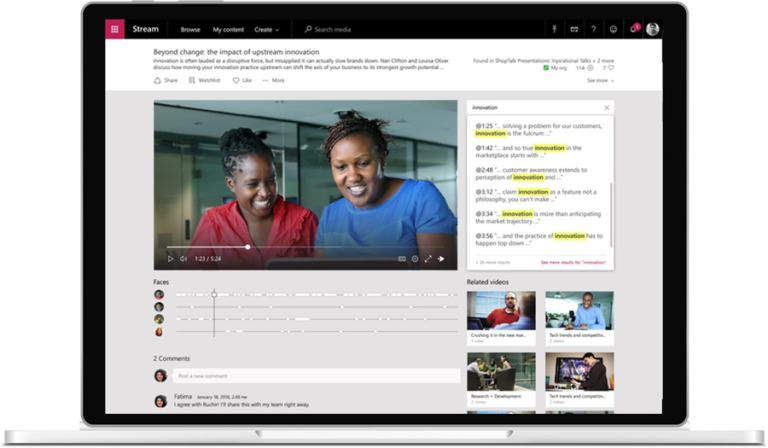Virtual meetings can often be a challenge when it comes to getting people engaged and participating. After all, unlike in-person meetings, everyone is often a small picture-in-picture on anyone’s screen. Then there’s the inability to see subtle non-verbal cues that often take place unnoticed in most meetings. As if that wasn’t enough, you’ve then got problems with varying quality of internet connections bringing its own set of headaches.


The Biggest Challenges of Virtual Meetings
In order to be able to ensure your virtual meetings flow smoothly, it’s important to be aware of the most common challenges that are specific to the platform. We’ve touched on a few of those in our introduction, but it’s worth diving deeper into them to understand how they can affect engagement and participation. Here are the most common and biggest challenges that you face when it comes to virtual meetings.
Too much freedom
When communication is done online—as is the case of virtual meetings—people are generally more relaxed as they’re insulated by the distance from the people they’re meeting with. This often makes it very easy for people to start talking over and even through each other. This problem increases proportionally in direct relation to the number of participants that you have in the meeting. The difficulty here is that it’s easy for confusion to reign and difficult to regain control.
Poor information retention
Modern human attention spans are already ridiculously short as they are—the average attention span of an internet user is 8 seconds! Virtual meetings can often run long, especially if everyone participating is comfortable where they are. This often makes it very difficult to keep people focused on the matters at hand, and just as difficult to have anyone pick up on the most critical information that your virtual meetings are trying to push.
Lack of social cues
One particular big challenge when it comes to virtual meetings is the general lack of social cues. These are the subtle non-verbal actions that we subconsciously or consciously look out for to gauge the reactions of people. Perfect examples include facial expressions and body language. A quick narrowing of the eyelids can signal doubt and disbelief while a crossing of the arms can be a sign of defensiveness. They make up 60% to 90% of our conversations with anyone and they’re very difficult to see in virtual meetings.
Misunderstandings
Because of the lack of social cues, it becomes surprisingly easy for misunderstandings to develop. A touch of sarcasm or even a well-meaning jab takes on a whole new dimension of meaning when you take the social cues out. All this can lead to arguments over what is essentially nothing. Even silence can be taken the wrong way with much difficulty for others in discerning what it means. After all, silence in virtual meetings can be caused by anything from focused attention, to tuning out, and even problems with the technology.
Trust is more difficult to build
There’s a power to face-to-face meetings that is lost in virtual meetings. Apart from the social cues that we just talked about, personal encounters help quickly identify common ground and parallel mindsets. These, in turn, become points around which your employees might find kindred spirits to get closer to and develop trust with. The distance inherent to virtual meetings takes away many of these things, making the team feel more disconnected.


Virtual Meetings Done Right
Virtual meetings, in a lot of ways, might seem like at a major disadvantage to face-to-face meetings, but they’re not without their advantages. For one thing, you can connect people across vast distances who might otherwise be unable to meet. Another reason is that it’s a key cornerstone of implementing a remote work setup that studies have shown increases overall productivity, satisfaction, retention, and profitability. The trick is to be smarter in your approach.
Take charge and set proper guidelines
The first thing you need to do to get your virtual meetings flowing smoothly is to take charge from the start. In your very first virtual meeting, start by setting clear ground rules on how the meeting will proceed. Key rules include only one person speaking at a given time. Anyone with something to present should be able to do so without interruption. Others can raise their hands—or an alternative custom action—during or after to be heard. Once they’re done, it will help you a lot to call on each attendee to ask if they have anything else to add.
Of course, if you have a lot of participants, that isn’t feasible. Just be encouraging and still ask if anyone has further questions. To facilitate better communications, make sure to offer to have your own comms channels open for those who might not want to share their thoughts with everyone during a meeting. On top of setting rules, you need to enforce them. When people start to talk over each other, step in! Being firm in this way imposes much-needed order to virtual meetings.
Give people nowhere to hide
Research has consistently shown that participation decreases in direct proportion to the number of people involved. While you may not be able to get everyone talking and jumping in at a single virtual meeting, you can certainly increase this across several meetings. The reason behind this need to involve others is because some employees will be not as outgoing as others—while still wanting their voices to be heard.
Sure, some people might be taken aback by being asked to participate—and you should certainly not try to force people—they’ll come to appreciate being given opportunities to speak out. The keys there are to be supportive as opposed to forceful, understanding as opposed to being persistent, and consistent in your encouragement. If you keep doing this, people will eventually get used to the system and start opening up on their own.
Check the time
Apart from the people, another thing you need to carefully look out for is time. It’s very easy in virtual meetings for things to drag on longer than they should. This can be frustrating for many employees who’d feel that time is taken away from their workdays to sit in on an overly long meeting. Much of this is due to how information is presented. Prior to any virtual meetings, it’s important that you take stock of exactly what needs to be discussed.
You should review what you need to present in order to cut out what’s extraneous and unnecessary. Streamline any presentations you are to give to the absolute essentials. Not only will this cut down the time for a meeting, but it will also aid in clarity and comprehension. The best presentations for virtual meetings use bullet points to highlight the most important bits. While there’s no hard, fast rule for the number of slides, less is always better.
Follow up to ensure understanding
While it might be common for people to send out minutes of the meeting after virtual meetings, you need to be especially attentive to the content. For one, a summary of points discussed (or the full document if you did a summary) should be sent out. Another check is making sure you take note on the summary of key points raised, who raised them, and whatever response was given. This lowers the chances of any confusion and misunderstanding happening.
Should there be cases where you couldn’t address a particular point for lack of information, make sure you make note of the time frame that you gave for providing an answer—then follow through accordingly. This, in particular, helps to create an atmosphere of trust and reliability that will work wonders for any future virtual meetings. Seeing questions being answered and issues being dealt with in a timely manner also does much to encourage others to participate.
Be attentive to your specific needs
As a final point, it’s just as critical that you pay particular attention to the specific needs of your business. The tips and suggestions here are only as effective as they are applicable to your specific company needs. If you require longer meetings, that’s fine. Just make sure that you call on everyone to share their views and create an open and free atmosphere of sharing. If longer meetings have proven effective for you, go for it by all means. What matters is what works.
A rough guide for virtual meetings is the three P’s: people, presentation, practice. Understand who your participants are, get to know those who need to be given more voice, and adapt accordingly. Tailor your presentation of information to fit what has worked and what does work in your experience. Finally, keep evolving the setup and execution of your virtual meetings to match what works and get rid of what doesn’t. You’ll soon come up with a system that works best for you and your company.







